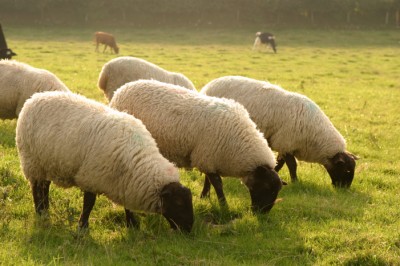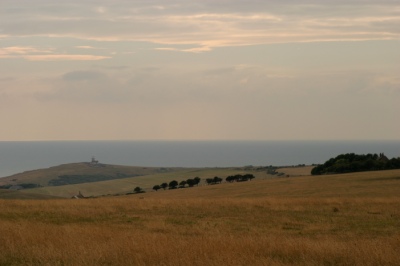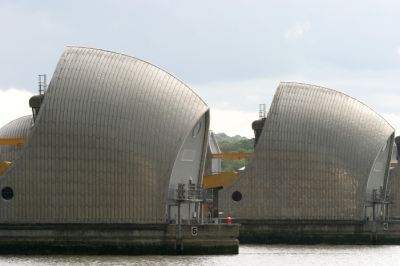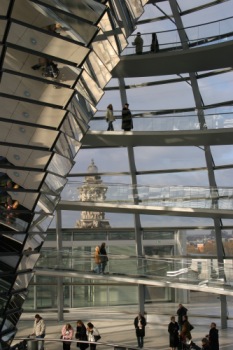Colin's Journal: A place for thoughts about politics, software, and daily life.
December 29th, 2006
Air
 I finished reading Air by Geoff Ryman on Boxing Day; these notes contain spoilers. It’s a good book, despite the science fiction elements being barely explored or thought out. The main strength of the book is the way in which the layers of a small village life are slowly revealed, bringing home the complexity of life in a subtle manner.
I finished reading Air by Geoff Ryman on Boxing Day; these notes contain spoilers. It’s a good book, despite the science fiction elements being barely explored or thought out. The main strength of the book is the way in which the layers of a small village life are slowly revealed, bringing home the complexity of life in a subtle manner.
At first the poor village is described in superficial terms, the characters are introduced with little background. As the story goes on, the dialogue, primarily the inner dialogue of the main character, Mae, brings out the history and second-guessing of motivations that forms so much of people’s relationships. The creation of the characters in this way works very well, especially as the author has been able to avoid Mae becoming all knowing. Events and characters still happen outside of Mae’s control and knowledge, striking a good balance between fleshing out the world around Mae and drowning the story in unnecessary detail.
The impact of the interactive TV/Internet on the rural village is also well explored. The success of the main protagonist, although explained away through her interface with Air, does strike me as lucky, but does not distract during reading. The role of the government and outsiders in the village’s life rings true, although it plays strongly to stereotypes.
The only part of the story that doesn’t work for me is Mae’s pregnancy. This plays a useful role in the plot, but stretches believability that is already under strain from the barely explained sci-fi elements.
Image: Paris Street.
December 11th, 2006
A collection of thoughts
Spam ceased to be a problem for me for a long time. Evolution’s integration with SpamAssassin has meant very little junk landing in my inbox for many years now. The downside to this happy state of affairs has recently made itself known – many emails that should be landing in my inbox, aren’t. Having to glance through all my spam to fish out those emails that need rescuing has sharply reminded me of just how big a problem spam really is.
 Django looks like a really nice web framework. The way in which each layer of the stack can be customised with the minimal of fuss should make it very easy to use. Compared to Zope and other monolithic environments it’s a welcoming combination. I need to find a project that requires me to build a web app so I can try it in anger.
Django looks like a really nice web framework. The way in which each layer of the stack can be customised with the minimal of fuss should make it very easy to use. Compared to Zope and other monolithic environments it’s a welcoming combination. I need to find a project that requires me to build a web app so I can try it in anger.
Wii intrigues me. I like the idea of something that really does change the state of the art of human/computer interfaces. The years of hot air about 3D GUIs and alternative approaches to using a computer have given way, thanks to a games console, to a genuine change in approach. Not just that, but according to those that know such things, it’s meant to be fun too boot!
However several things are holding me back from getting one:
- I don’t like 3D games. This mainly because the standard first person perspective technique used for most games makes me ill. I don’t know whether this would be a problem for Zelda, hopefully not.
- If we do move to the states next year then it wouldn’t work anymore.
- I’ve not played games seriously for years. We have in the past played Gameboy Advanced games, but I found the poor screen on the original model eventually put me off.
- It looks like a serious amount of effort would have to be expended to actually find one.
Still I’m tempted and it is nearly Christmas.
October 29th, 2006
FC6
Fedora always comes with at least one significant problem. Looking back I’d say that FC5 was probably the smoothest install – only tracking down the right version of the wireless firmware proved difficult. My favourite user-unfriendly Fedora moment was having to manually type in kernel boot parameters, just in order to enable the media integrity check during installation. FC6 gives this not-been-tested-prior-to-release bug a run for it’s money.
 Having learnt from previous experiences I went with a full installation of Fedora Core 6 rather than an upgrade. Problems encountered:
Having learnt from previous experiences I went with a full installation of Fedora Core 6 rather than an upgrade. Problems encountered:
- During installation several packages couldn’t be read from the CD. Selecting re-try a few times solved the problem, but for a moment I thought I’d be stuck without a usable machine.
- When I logged in I found that the CPU was pinned at full speed.
- Searching for files in Nautilus doesn’t work.
The cpuspeed problem turned out to be caused by Fedora installing a 586 rather than 686 kernel. I had to uninstall the 586 version (plus dependencies), and then install the 686 version. This left the GRUB bootloader configuration broken. It took several attempts at manual configuration using the rescue disk to get this fixed.
The lack of search in Nautilus is caused by beagle not working. Removing beagle (and re-starting Nautilus) has solved that particular problem.
Overall Fedora remains a distribution only usable by the Linux savvy. I’ve yet to see a Linux installation that’s flawless, but the nature of the problems (and ease with which they are worked around) indicates to me that the biggest barriers remain quality of testing rather than any fundamental technical problem.
Image: Three sheep from the Lake District village of Cartmel.
August 13th, 2006
Visiting the coast
 It was a good day out despite the weather. Setting off in late morning I started the drive to the coast in drizzle and grey skies. As I got hungry I kept an eye out for somewhere to eat, plumping for a nice looking pub in Tunbridge Wells. The Weavers has both a restaurant and bar menu, with interesting sounding food hosted on both. I went with a jacket potato, topped with sausage and chili jam and accompanied by a salad. It’s an unusual combination, but it worked well, in part thanks to the balance provided by the salad, particularly the olives.
It was a good day out despite the weather. Setting off in late morning I started the drive to the coast in drizzle and grey skies. As I got hungry I kept an eye out for somewhere to eat, plumping for a nice looking pub in Tunbridge Wells. The Weavers has both a restaurant and bar menu, with interesting sounding food hosted on both. I went with a jacket potato, topped with sausage and chili jam and accompanied by a salad. It’s an unusual combination, but it worked well, in part thanks to the balance provided by the salad, particularly the olives.
After lunch I pushed on to Eastbourne where the weather broke and became a mixture of sunshine and showers for the rest of the day. The pebble beach was fairly quiet, with most people sticking to the promenade. Although the pier dominates the water front I was more interested in getting to the views of the south downs that lie further west.
The next stop before returning home was Beachy Head, which provides great views of Eastbourne and a sharp contrast to the seaside town. The South Downs at this point are extremely windswept with the few trees around bent over in the prevailing wind.
We are now planning our summer trip. The basic aim is to drive north, spending some time in the Lake District before getting into Scotland. We’ll only have a week, so need to plan carefully to avoid spending too many days doing solid driving. There’s two B&B / Restaurants in the Lake District that we are interested in, so we should be able to get to at least one of them. My only particular target in Scotland is to find some good scenery to photograph and visit Edinburgh.
May 29th, 2006
Weather and such
 For the past two weekends running it’s been wet and grey outside. Today was an exception – this afternoon the sky turned mostly blue and we had some warm sunshine in the slightly nippy air. I’ve been meaning to go down to the Thames barrier ever since we passed it on the way to London City Airport.
For the past two weekends running it’s been wet and grey outside. Today was an exception – this afternoon the sky turned mostly blue and we had some warm sunshine in the slightly nippy air. I’ve been meaning to go down to the Thames barrier ever since we passed it on the way to London City Airport.
The Thames barrier has its own park and is easily accessible from the Pontoon Dock stop of the DLR. It’s only twenty minutes or so from our flat, so I grabbed my camera this afternoon and headed that way. By the time I turned up the last of the sunlight was fading and a dark grey sky had formed. Within moments of me arriving at the bank of the Thames we had the first speckles of rain, followed shortly by lightening, thunder, hail and heavy rain. All of which is a long winded way of saying that I didn’t get many shots of the barrier in a good light.
As the state of my journal shows I’m struggling to motivate myself into writing these days. I’ve got a few ideas for posts, mainly related to Agile and Offshore working practises, but haven’t yet taken the time to pen them. Hopefully taking off next week will help – and let me get some good summer pictures around Toronto.
Image: Thames Barrier shortly before a downpour.
April 8th, 2006
Printing
Today I tackled an outstanding issue with our home computer setup – my inability to print.
 Last year we bought a Canon iP4200 printer as our replacement for the Epson left in North America. The printer is pretty good; it handles duplex printing, has reasonably priced ink, and when setup to print photos does a very acceptable job indeed. The only downside was lack of a Linux printer driver, other than the commercial TurboPrint.
Last year we bought a Canon iP4200 printer as our replacement for the Epson left in North America. The printer is pretty good; it handles duplex printing, has reasonably priced ink, and when setup to print photos does a very acceptable job indeed. The only downside was lack of a Linux printer driver, other than the commercial TurboPrint.
One work around for this was to have the printer connected to a MacOS X machine and shared over the network. Fedora Core 5 can see MacOS X shared printers on the network and can print to them as if they are a postscript printer. In practise this didn’t work without setting up an entry in the /etc/hosts file so that the hostname of the machine hosting the printer could be found.
Today I tried to figure out why FC5 couldn’t use Zeroconf to discover the address of the MacOS X machine instead of having to manually setup the /etc/hosts file. The answer is fairly straight forward: FC5 is missing the nss-mdns library which provides this functionality. Thankfully it’s easy to get hold of and configure this, something I’ve documented in “Zeroconf in Fedora”. Having sorted this out I can now print directly over the network.
In a piece of additional good news, Canon have made available an iP4200 printer driver for Linux. It’s not currently publicised anywhere on their European support website, but can be found directly on their Japanese ftp site.
To use these drivers install the following files:
- cnijfilter-common-2.60-1.i386.rpm
- cnijfilter-ip4200-2.60-1.i386.rpm
- cnijfilter-ip4200-lprng-2.60-1.i386.rpm
To make the driver available during printer configuration go into the Printing administration tool (Desktop -> Administration -> Printing) and select “Import PPD…” from the “Action” menu. The file to import is canonip4200.ppd in /usr/share/cups/model/. The printer driver will now appear as “IP4200 (PPD)” in the list of Canon drivers during printer setup.
January 23rd, 2006
Fixing faults
 Software has a curious property, in that it never decays or weathers, and yet requires maintenance to be useful. If you install a new program, it may stop an existing program from working. If you try to open a recently produced Word document into an old version of Word, it may fail to load. If a piece of software held opinions, it would see this as a an environmental change.
Software has a curious property, in that it never decays or weathers, and yet requires maintenance to be useful. If you install a new program, it may stop an existing program from working. If you try to open a recently produced Word document into an old version of Word, it may fail to load. If a piece of software held opinions, it would see this as a an environmental change.
Software maintenance is the opposite of physical world maintenance. In the physical world you replace the bits that are damaged, the broken pane or the cracked paving stone. In software maintenance you take code that hasn’t changed, and alter it to suit a new environment.
Stories have the same maintenance property. Books may decay over time, but if the words are carefully copied from one book to another without error, the story itself will remain unchanged. However a changed environment can cause faults in our understanding or appreciation of a story. Stefan Geens ponders whether the manner of story telling will return to that of the Greek myth. Does a modern audience appreciate a world of restricted communication, or do they have more in common with Greek gods?
Over a year ago, I decided to stop maintaining my own RSS/Atom aggregator. Although I’ve not been making fixes since then, I had continued to use it out of nothing but momentum. Over the year various bits of other software on my machine has been upgraded, and the Atom file format has evolved into a 1.0 specification. As a result several problems started to appear in TALAggregator, and I’ve finally decided to stop using it. I’m now getting used to the Sage feed reader extension for Firefox, software that is actively maintained and developed.
January 1st, 2006
The end of 2005

Quote of the day “I cannot imagine achieving anything meaningful over a 45-minute lunch.” – Alejandra Moore, a communications consultant.
In the first half of 2005 I did little travel. In the second half, particularly from November onwards, I’ve been dashing off all over the place. It started in mid-October with a week long trip to Pune for work. It was my first time in India, and I greatly enjoyed it. The food was generally good, with a couple of restaurants really standing out. Getting around town in the evenings in the motor-rickshaws is fast, cheap, and exciting/dangerous. Getting to work in the morning and getting back in the afternoon takes a while, bouncing along in the back of a four wheel drive van.
Two weeks after getting back from Pune we went to Paris for a weekend, my first time there, and only my second trip on the Eurostar. Starting in the middle of one city and ending in the middle of another is a huge advantage; I could leave work at the normal time, and when we returned our delays in arriving into London meant only a short taxi ride to get home. Paris itself was a lot of fun, though we’ve only scratched the surface of the city.
Berlin was next, also an excellent trip (the architecture was particularly interesting as much of the city has been rebuilt after the war), but marred slightly upon return due to the Stanstead “Express” (45 mins) being replaced by a coach (1hr – and you’re still only at Liverpool Street), not fun at 1am. Berlin was my first trip to Germany in three years, and so it was a strange coincidence that I needed to go to Frankfurt later that same week for work (of which I saw very little).
Two days after getting back from Frankfurt I was off to Pune again, another enjoyable trip at a much more relaxed pace. Exactly a week after getting back from Pune, it was off to Toronto. The reason for the trip was Shana’s defence, although we also got some time to relax and visit friends. We got back on the 18th of December, and then headed to Venice for our Christmas break on the 22nd.
I don’t normally do New Year’s resolutions – but I think I need to try and spread out our travel commitments more.
Photo: Notre Dam Cathedral hiding behind trees.
Software
The full list of my published Software
Email: colin at owlfish.com
